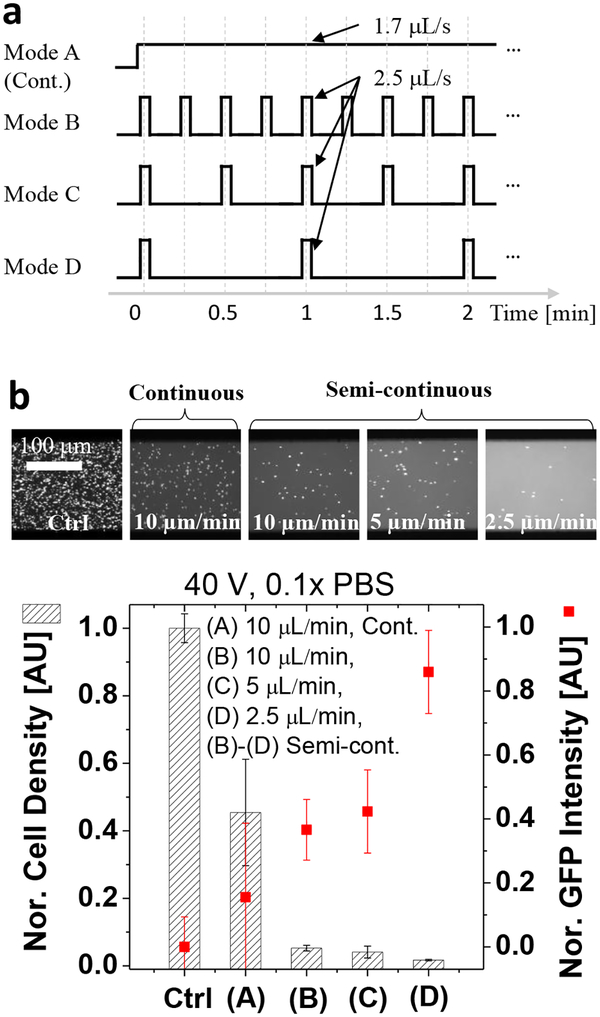Figure 4.
Programmed electromechanical lysis of bacterial cells. a, Control of bacterial loading by programming a syringe pump. Mode (A)–(D) exhibited different bacterial loading frequency and flow rates. b, Quantitative results in various programming modes. The semi-continuous lysis enabled high lysis efficiency and high lysate yields compared to the continuous method (A) by allowing more time to experience vortices and electric field. The cell density was normalized by the input (Ctrl) cell number while the GFP intensity was normalized by the maximal GFP recovery value in the lysis experiments. The error bars in Fig. 4b were obtained by triplicated experiments.

